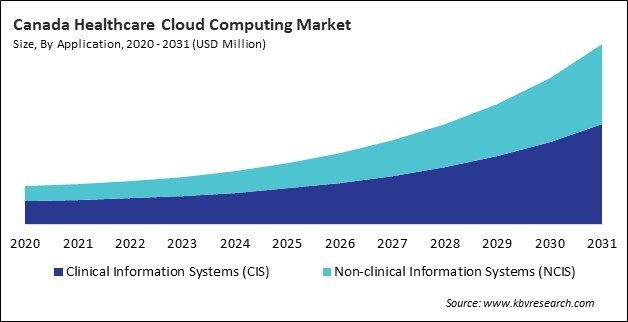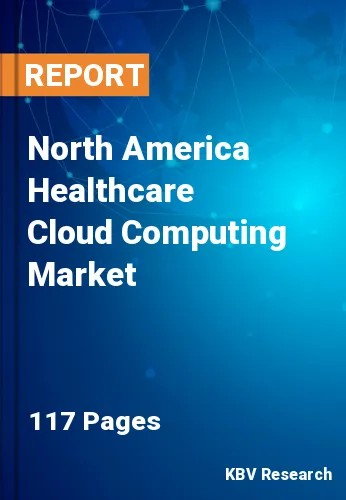The North America Healthcare Cloud Computing Market would witness market growth of 16.5% CAGR during the forecast period (2024-2031).
The US market dominated the North America Healthcare Cloud Computing Market by Country in 2023, and would continue to be a dominant market till 2031; thereby, achieving a market value of $38,369.8 million by 2031. The Canada market is exhibiting a CAGR of 18.8% during (2024 - 2031). Additionally, The Mexico market would experience a CAGR of 18% during (2024 - 2031).

Healthcare cloud computing uses cloud-based platforms and services to store, manage, and process health-related data and applications. It allows healthcare organizations such as hospitals, clinics, and research institutions to leverage the computing power, storage capacity, and software applications delivered via the Internet rather than relying solely on physical on-premise infrastructure. Cloud computing in healthcare enables real-time access to medical data, facilitates better collaboration among healthcare providers, and improves overall operational efficiency while ensuring compliance with stringent data security regulations.
The healthcare cloud computing market has rapidly emerged as a transformative force in the healthcare industry, reshaping how healthcare providers, patients, and stakeholders manage and access critical information. The increasing complexity of healthcare data has driven this transformation, the rising demand for cost-efficient and scalable solutions, and the shift towards patient-centered care models. Cloud computing, which refers to the delivery of computing services—including storage, processing power, and applications—over the Internet, offers an innovative solution to the unique challenges faced by healthcare organizations.
The increasing disease burden in Mexico is the primary factor driving the increasing demand for healthcare cloud computing, particularly the increasing prevalence of chronic diseases such as diabetes and cardiovascular conditions. According to data from the National Library of Medicine, nearly 12.8 million Mexicans were diagnosed to be living with diabetes in 2019, creating a significant demand for healthcare resources and data management solutions. The cloud computing infrastructure allows healthcare providers to remotely monitor patients, manage large volumes of health data, and analyze trends to improve disease management and prevention.
Mexico’s adoption of cloud-based health systems is helping the country’s healthcare providers to scale their services and manage the increasing demand caused by the growing burden of chronic illnesses. Hence, the landscape of regional healthcare cloud computing continues to evolve rapidly, supported by both public and private sector initiatives.
Free Valuable Insights: The Healthcare Cloud Computing Market is Predict to reach USD 142.7 Billion by 2031, at a CAGR of 17%
Based on Application, the market is segmented into Clinical Information Systems (CIS) {Electronic Health Records (EHR), Picture Archiving and Communication System (PACS), Radiology Information System (RIS), and Others (COPE, PIS, etc.)}, and Non-clinical Information Systems (NCIS) {Revenue Cycle Management (RCM), Billings & Accounts Management Solution, and Others (SCM, HIE, etc.)}. Based on Service Model, the market is segmented into Software as a Service (SaaS), Platform as a Service (PaaS), and Infrastructure as a Service (IaaS). Based on Deployment Model, the market is segmented into Public Cloud, Private Cloud, and Hybrid Cloud. Based on End User, the market is segmented into Healthcare Providers (Hospitals, Diagnostic and Imaging Centers, Pharmacies, and Ambulatory Centers) and Healthcare Payers (Private Payers and Public payers). Based on countries, the market is segmented into U.S., Mexico, Canada, and Rest of North America.
By Application
By Service Model
By Deployment Model
By End User
By Country
Our team of dedicated experts can provide you with attractive expansion opportunities for your business.

